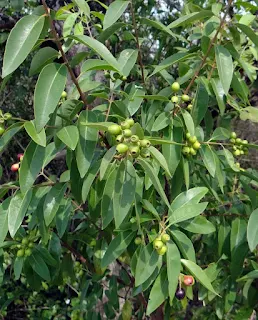Farming Business Ideas: Farmers can easily earn crores of rupees by cultivating this tree, know how to earn money
Farming Business Ideas: Farmers can easily earn crores of rupees by cultivating this tree, know how to earn money crossorigin="anonymous">
style="display:block"
data-ad-client="ca-pub-6098966450721824"
data-ad-slot="9770451068"
data-ad-format="auto"
data-full-width-responsive="true">
One potential tree that farmers can cultivate to earn a significant amount of money is the sandalwood tree (Santalum album). Sandalwood is a highly valued timber tree known for its fragrant wood and oil, which are used in various industries such as perfumery, cosmetics, and traditional medicine.
Here's how farmers can earn money by cultivating sandalwood trees:
1. Initial investment:
Farmers need to invest in acquiring sandalwood saplings from a reliable source. These saplings should be of good quality and disease-free.
2. Suitable climate and soil:
Sandalwood trees thrive in tropical and subtropical regions with well-drained, loamy soil. It's important to ensure that the climate and soil conditions are suitable for sandalwood cultivation.
3. Long-term commitment: Sandalwood trees
Sandalwood trees take a significant amount of time to grow and mature. Typically, it takes around 15 to 20 years for the trees to reach harvestable size. Farmers need to have a long-term perspective and commitment to see returns on their investment.
4. Proper cultivation techniques: Sandalwood trees
Farmers should follow best practices for sandalwood cultivation, including appropriate spacing between trees, regular watering, pest and disease management, and periodic pruning to promote healthy growth.
5. Value-added products: Sandalwood trees
In addition to selling the harvested sandalwood, farmers can explore opportunities to create value-added products. This may include distilling sandalwood oil, making incense sticks, or producing sandalwood-based cosmetics or herbal products. These value-added products can fetch higher prices and increase profitability.
6. Market research and networking:
Farmers should conduct market research to understand the demand and pricing trends for sandalwood in their region. It's crucial to establish connections with potential buyers, wholesalers, and manufacturers to ensure a steady market for their produce.
7. Government support: Sandalwood trees
Farmers can explore government schemes and initiatives that promote sandalwood cultivation. Some governments provide subsidies, technical assistance, and buyback guarantees to encourage farmers to engage in high-value tree cultivation.
8. Patience and risk management:
Cultivating sandalwood trees involves certain risks, such as disease outbreaks, market fluctuations, and theft. Farmers should have a contingency plan and employ risk management strategies to mitigate these risks. Patience is also key, as the returns on investment may take several years to materialize.
It's important to note that sandalwood cultivation requires proper planning, knowledge, and a long-term perspective. Farmers should consult with experts, agricultural institutions, and local authorities to gain specific insights and guidance based on their geographical location and market dynamics.






टिप्पणियाँ
एक टिप्पणी भेजें